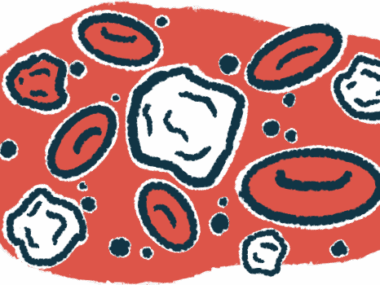ASCO 2016: Updated Data of MOR202 for Multiple Myeloma Presented by MorphoSys
Written by |

In a poster presentation at the 2016 ASCO Annual Meeting in Chicago, MorphoSys presented updated safety and efficacy data from an ongoing open-label, multicenter, Phase 1/2a clinical trial investigating MOR202 monotherapy in combination with lenalidomide (Len) and pomalidomide (Pom) plus dexamethasone (Dex) in 63 patients with relapsed/refractory multiple myeloma who had been previously treated.
The primary endpoints of the trial were safety, tolerability, and recommended dose of MOR202 alone and in combination with the immunomodulatory drugs (IMiDs). Secondary endpoints included pharmacokinetics and preliminary efficacy based on overall response rate, duration of response, time-to-progression, and progression-free survival.
MOR202 belongs to the class of drugs known as monoclonal antibodies and binds to the CD38 molecule, which is found on the surface of multiple myeloma (MM) and other blood cancer cells. Once MOR202 is bound, it delivers signals that instruct the immune system to kill cancerous cells.
The updated data referred to the combination cohorts of MOR202 (8 mg/kg) plus IMiDs. The results showed that among five patients treated with 8 mg/kg MOR202 combined with Pom/Dex, two had complete responses and two had minor responses. In addition, there were two partial responses and one very good partial response out of the four patients in the combination cohort.
MOR202 administered in doses of up to 16 mg/kg as a two-hour intravenous infusion resulted in low incidence of infusion-related reactions.
First biomarker data suggests that CD38 expression on myeloma patient bone marrow plasma cells was preserved during treatment with MOR202.
“We are very pleased with the updated clinical results for MOR202 in multiple myeloma, in particular with two complete responses out of five patients treated with MOR202 plus Pom/Dex,” Dr. Arndt Schottelius, chief development officer of MorphoSys AG, said in a press release. “Since we last reported data in December 2015, new and deep responses have been reported with MOR202 in combination with IMiDs.
“On the safety side, we were pleased to observe that MOR202 could be given to all patients in a two-hour infusion time, with infusion-related reactions of grade 1 and 2 in only 14 percent of patients. The dose escalation study will continue as planned, focusing on the combination treatment, in particular the upcoming cohorts of 16mg/kg MOR202 plus Pom/Dex and Len/Dex,” he added.






